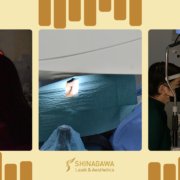Set Yourself Up For Good Eye Health When Working From Home
As working from home becomes a new reality for lots of people, we give some tips on how you can best set yourself up for success.
Since working from home becomes a new norm for lots of people around the world during the COVID-19 pandemic, the challenge of a change in setting can bring with it some unique problems, including ones directly related to your eyes.
Here are some solutions to better help you get accustomed to your new situation and ensure that you set yourself up for great eye health.
Your space, defined
Setting up your workspace properly is an integral part of ensuring proper eye safety. This is no different for a home office as it would be in a proper office setting.
Make sure that you place your monitor(s) at an appropriate distance from your eyes – too close or too far invites a certain amount of continual eye strain that could cause larger problems down the line, including eye irritation and muscular issues.
Ideally, your monitor should be between 40 and 70 cm from your eyes and angled 15 to 30 degrees in terms of line of sight.
The added benefit of optimal monitor placement is that the rest of your body can then also naturally relax as you put yourself into a proper position that invites less muscle strain too.
Similarly, make sure that your chair is appropriately placed – level it so that your feet are touching the ground flat without bending at the knee. This too can have great benefits for your legs and back as you continue to work.
You can also help your body by getting up and regularly stretching – staying in the same position for long periods of time can lower blood flow to your muscles and affect your posture.
It is important to be mindful of your lighting situation – improper lighting can produce more eye strain than you realize, especially if you are switching back and forth from a lit computer monitor to paper documents. Positioning your workspace with proper lighting can have numerous benefits – here are some tips about what to look out for when setting yourself up.
Don’t forget to stay hydrated
We also recommend you schedule water breaks. Dehydration can have a negative impact on your eyesight, including dry eyes and headaches. Luckily, working from home means that you likely have closer access to taps to better facilitate regular water intake during your day. Your body will thank you.
The power of the 20/20/20 rule
An important part of working from home is being able to take breaks from a screen that will allow your eyes time to rest.
That’s why the 20/20/20 rule is so important: every 20 minutes, take 20 seconds to look at an object that’s at least 20 feet away.
This way, you can break up the workday in a manner that benefits your eyes at regular intervals while ensuring that your eyes ease up on continually focusing while working.
If you are looking to make your life easier, our life-changing vision correction procedures can help by removing the added hassle of everyday eyewear.
Although items like contact lenses can help you get through your day, they can also dry out and cause irritated eyes and headaches when you spend your day looking at a computer screen, leading to becoming less productive overall. Book a consultation and LASIK screening today to find out how we can help you better work from home.
Call our Patient Care Lines: (+632) 7-368 5238 l (+63) 917 862 7454 l (+63) 921 217 0517 for inquiries, questions, and appointments or talk to our consultants via LiveChat here on our website.






